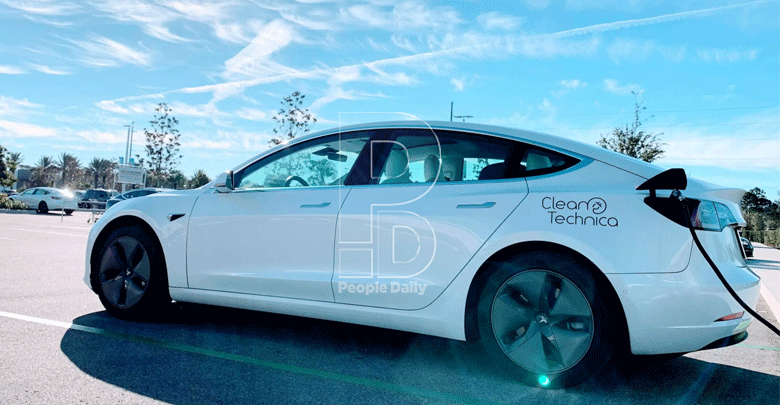Ten modern tech innovations rejigging automotive sector

The automobile industry is one of the fields that’s greatly benefitting from the world’s rapid technology development. Allan Adalla lists a few technological advancements of the current era that are overhauling the industry for the better.
The 360-degree camera
Many drivers have fallen victim of either scratching a wall or someone else’s car while reversing or parking.
This is a stressful event that can cost you painting the whole car. For that reason, Nissan innovated and installed in cars the 360-degree camera system to give drivers the real-time view of the area surrounding their cars.
The camera tech combines the perspectives of several video cameras placed around the vehicle into one image, typically, a top-down view.
As you manoeuvre into a parking space, the 360-degree camera system shows nearby obstacles, helping you avoid impacts.
With time, other car brands have joined the bandwagon improving this tech day-by-day.
Suspensions
The car and motorbike suspensions have improved overtime. In 1906, brothers Alanson and William Brush unveiled the coil spring, which has developed over time on both motorbikes and cars.
Most cars are currently fitted with air suspensions while most bikes are now riding over electronic suspension.
With matching up of these technologies, it’s now possible to have the best of both worlds. For the electronic suspensions, various sensors talk to an engine control unit several times per second, which can then electronically adjust compression and rebound damping as you ride based on predetermined settings— softer for leisurely riding and finer for more aggressive rides.
In air suspensions, compressors inflate the bags to a certain pressure in order to behave like springs. It replaced the coil spring system.
Safety
I have heard complaints from German cars critics that the rides have excess sensors. Personally, I don’t see this as a drawback, but a good innovation. Sensors use tiny cameras all over the vehicle that allow the driver to check for objects that are usually difficult to see from the driving seat.
There are tyre pressure sensors, lane change sensors, and collision control sensors that prevent accidents.
The use of an anti-lock braking system and traction control also allow drivers to stay in control of their vehicle while driving.
In motorbikes, the anti-lock braking systems use wheel-speed sensors to determine when (during braking situations) your wheel might lock up, and then prevent that from happening by rapidly reducing and reapplying brake pressure multiple times per second.
Connectivity
Nowadays, vehicles come with a tamper-proof digital identity that differentiates them from other vehicles in the network.
This enables easy tracking of vehicular data for various uses such as insurance, driver safety, predictive maintenance, and fleet management.
Sharing vehicular data helps not just the individual customer, but overhauls the entire mobility ecosystem.
Advanced user interface system
With the use of augmented reality, you can transform your windshield as a screen for displaying information to the user.
The system can show relevant information through the head-up display such as current weather, speed, gas mileage, revolutions per minute and speed among others.
The navigation technology, with the use of holographic symbols, allows drivers to follow directions without the need for taking their eyes off the road.
For motorbikes such as the Harley-Davidson, Indian, BMW, and Ducati, they are installed with screens so clear and sharp that you’re tempted to stop and watch a movie on them.
Beyond their clarity, some offer touchscreen capabilities, Bluetooth connection, Apple Carplay, Android auto, and more.
Autonomous driving system
Cars such as BMW are using the self-driving system to perform automatic parking without the driver’s intervention.
This system uses sensors to detect the space available and calculates the exact way to park the automobile.
The tech is set to change the automobile industry’s face by eliminating the need for a human behind the wheels.
Likewise, the Audi A8 model already has a cruise control system with a stop function that implements this feature.
The system works by using 30 control sensors all over the vehicle to provide information about the vehicle’s surroundings to the processor.
It can detect the vehicle travelling ahead of you and automatically adjust the travelling speed from zero to 250kph.
The system employs two radar sensors in the front of the vehicle that allows the control system to manoeuvre the vehicles.
Artificial intelligence
Artificial Intelligence (AI) technologies such as machine learning, deep learning, and computer vision find applications in robotic automation within the automotive industry.
These guide self-driving cars, manage fleets, assist drivers to improve safety and improve services such as vehicle inspection or insurance.
AI also finds applications in automotive manufacturing, where it accelerates the rate of production and helps reduce costs.
Phone apps
Geeks spend sleepless night researching on new phone apps to bring in. The automotive industry has been one of the big beneficiaries of these apps.
For example, Zero Motorcycles app are used to allow the rider to adjust power output, regenerative braking levels, and check on the status of their motorcycle through an app.
Yamaha too is in on the app game; its Y-TRAC app is essentially a data acquisition system for R1M riders, allowing them to see their inputs on the bike, as well as any intervention from rider aids, per lap.
Yamaha has also extended the tech into its motocross line, with an app to make adjustments to the YZ450F.
BMW company partnered with Apple to invent the Carkey technology where you are able to lock or unlock your car using the phone app without a physical key.
Additive manufacturing
3D-printing helps the automotive industry in three primary ways. Firstly, it enables rapid prototyping with 3D printed models that accelerate the design and testing phases of production.
Secondly, it allows manufacturers to print spare parts to match their requirements.
Lastly, additive manufacturing of composite materials leads to automotive parts that are lighter, stronger, and more durable.
Pollution reduction
Tesla is by far the most popular electric cars manufacturer. The main aim for electric vehicles is to reduce the rate of emissions to the environment.
Even when charged with electricity from the grid, electric vehicles produce only a third of the greenhouse gas emissions that a fuel-powered vehicle would, due in large part to their high energy-efficiency.
Fully electric cars have only a battery to store an electric charge and plug-in hybrid electric cars that have both a battery and a gasoline engine.
Plug-in hybrid electric cars have a gas engine that kicks in once the batteries run out of power.












